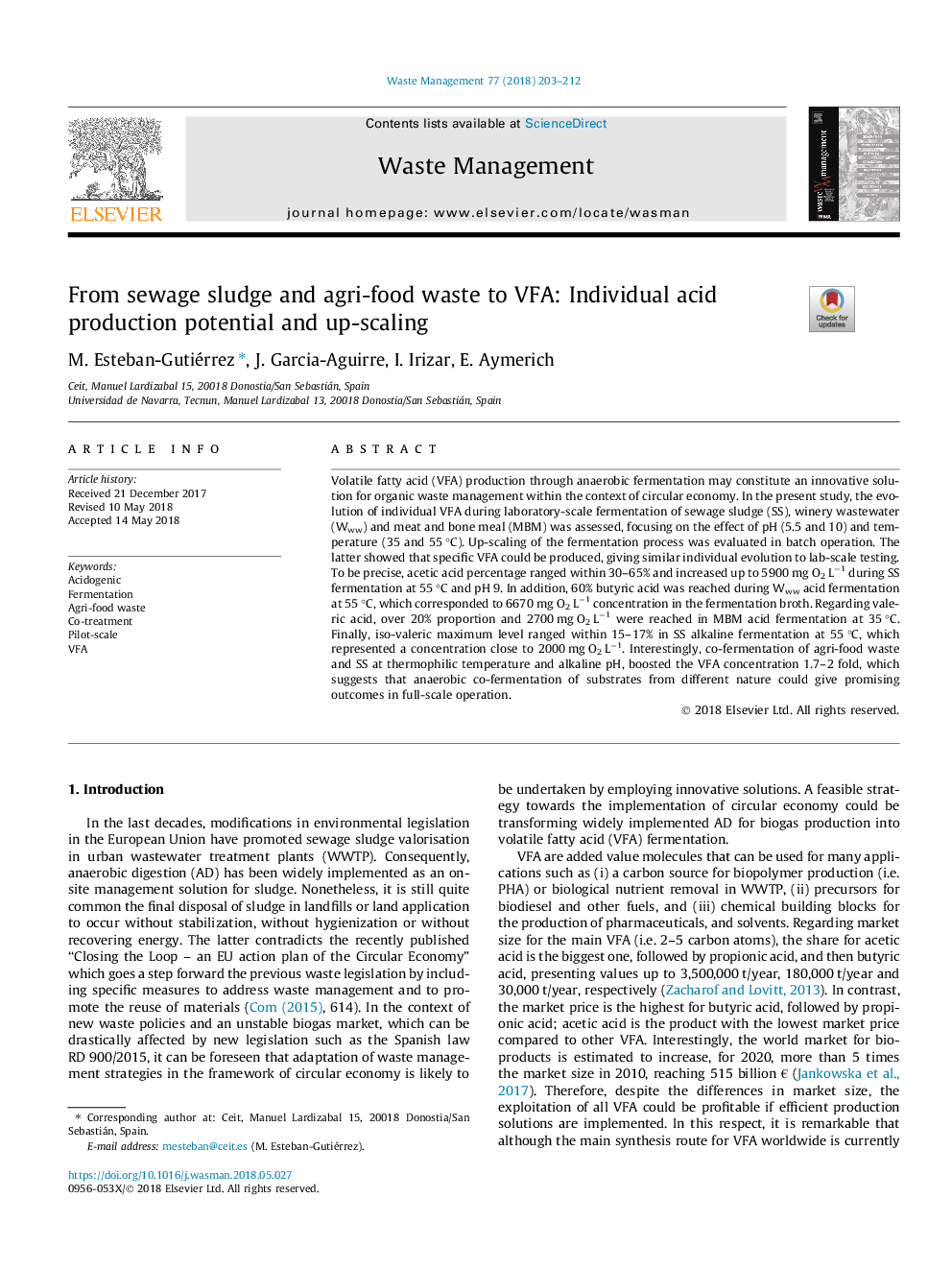| Article ID | Journal | Published Year | Pages | File Type |
|---|---|---|---|---|
| 8869568 | Waste Management | 2018 | 10 Pages |
Abstract
Volatile fatty acid (VFA) production through anaerobic fermentation may constitute an innovative solution for organic waste management within the context of circular economy. In the present study, the evolution of individual VFA during laboratory-scale fermentation of sewage sludge (SS), winery wastewater (Www) and meat and bone meal (MBM) was assessed, focusing on the effect of pH (5.5 and 10) and temperature (35 and 55â¯Â°C). Up-scaling of the fermentation process was evaluated in batch operation. The latter showed that specific VFA could be produced, giving similar individual evolution to lab-scale testing. To be precise, acetic acid percentage ranged within 30-65% and increased up to 5900â¯mgâ¯O2â¯Lâ1 during SS fermentation at 55â¯Â°C and pH 9. In addition, 60% butyric acid was reached during Www acid fermentation at 55â¯Â°C, which corresponded to 6670â¯mgâ¯O2â¯Lâ1 concentration in the fermentation broth. Regarding valeric acid, over 20% proportion and 2700â¯mgâ¯O2â¯Lâ1 were reached in MBM acid fermentation at 35â¯Â°C. Finally, iso-valeric maximum level ranged within 15-17% in SS alkaline fermentation at 55â¯Â°C, which represented a concentration close to 2000â¯mgâ¯O2â¯Lâ1. Interestingly, co-fermentation of agri-food waste and SS at thermophilic temperature and alkaline pH, boosted the VFA concentration 1.7-2 fold, which suggests that anaerobic co-fermentation of substrates from different nature could give promising outcomes in full-scale operation.
Related Topics
Physical Sciences and Engineering
Earth and Planetary Sciences
Geotechnical Engineering and Engineering Geology
Authors
M. Esteban-Gutiérrez, J. Garcia-Aguirre, I. Irizar, E. Aymerich,
